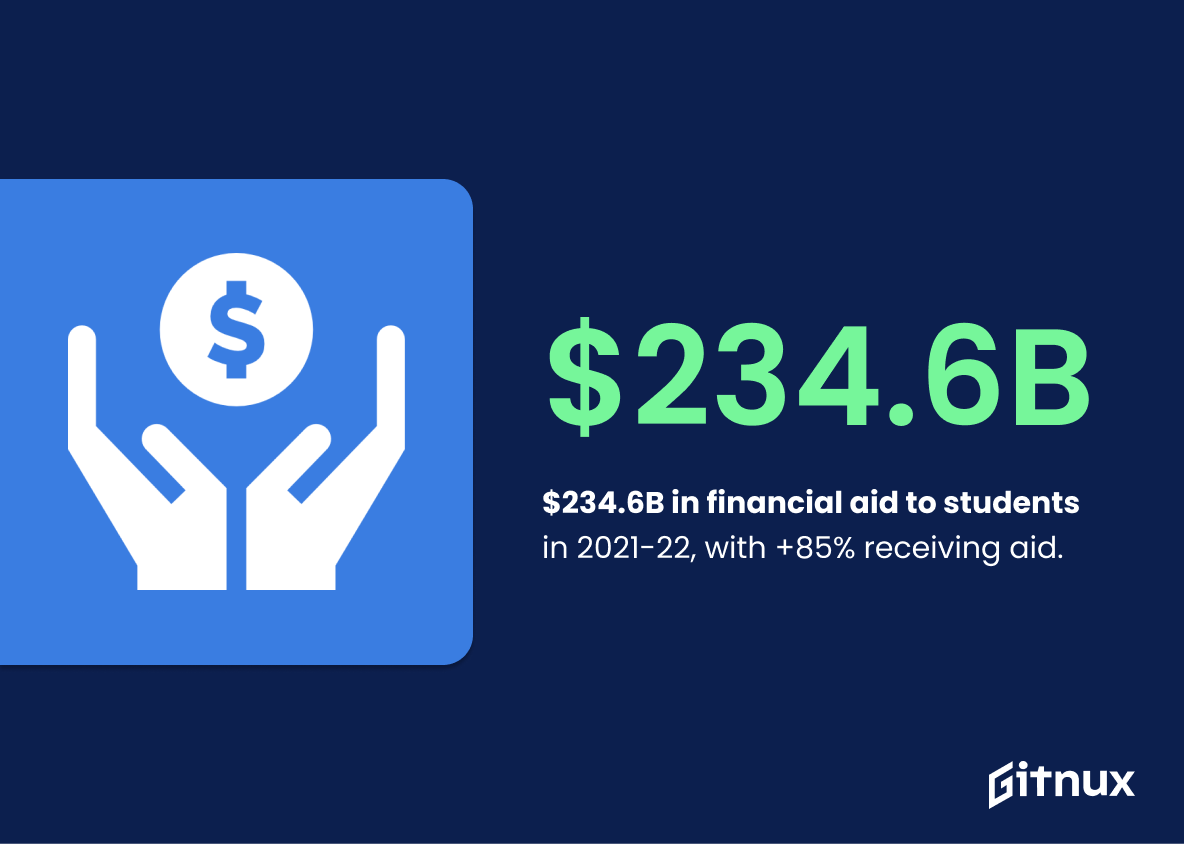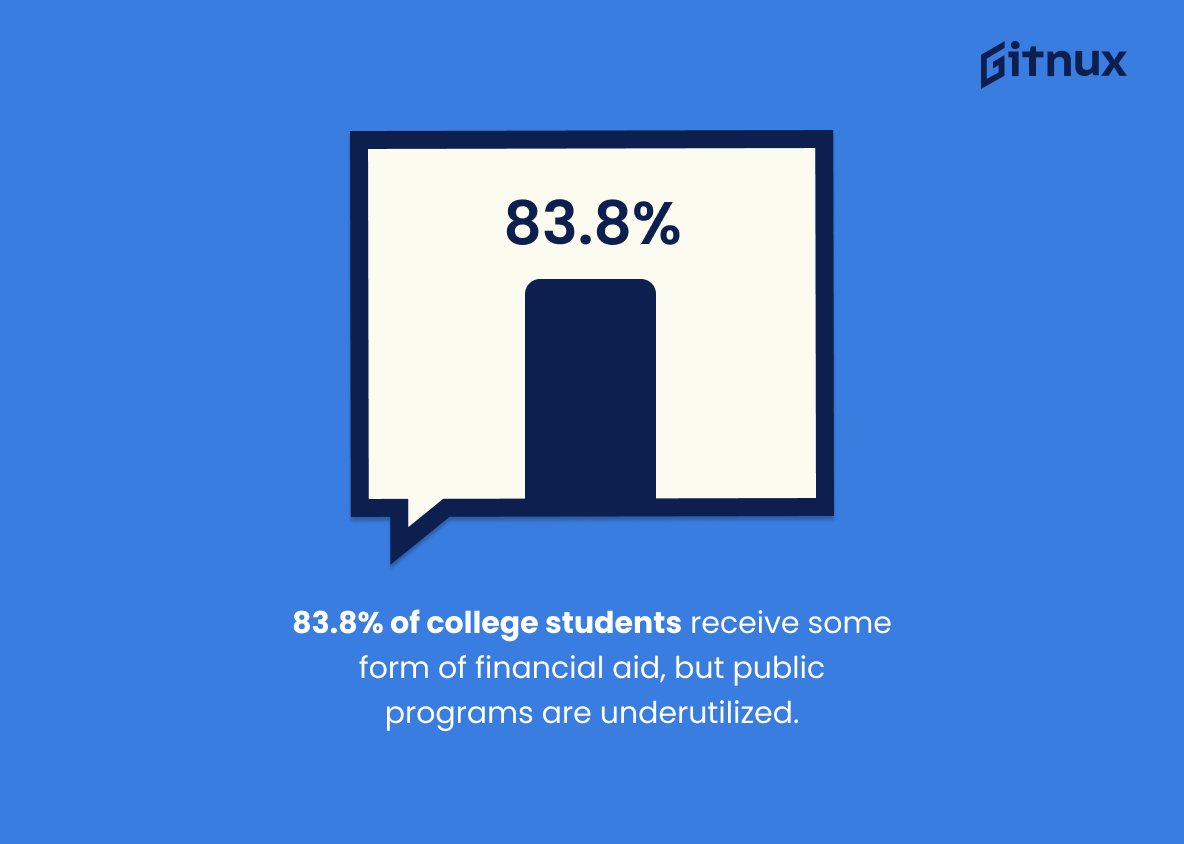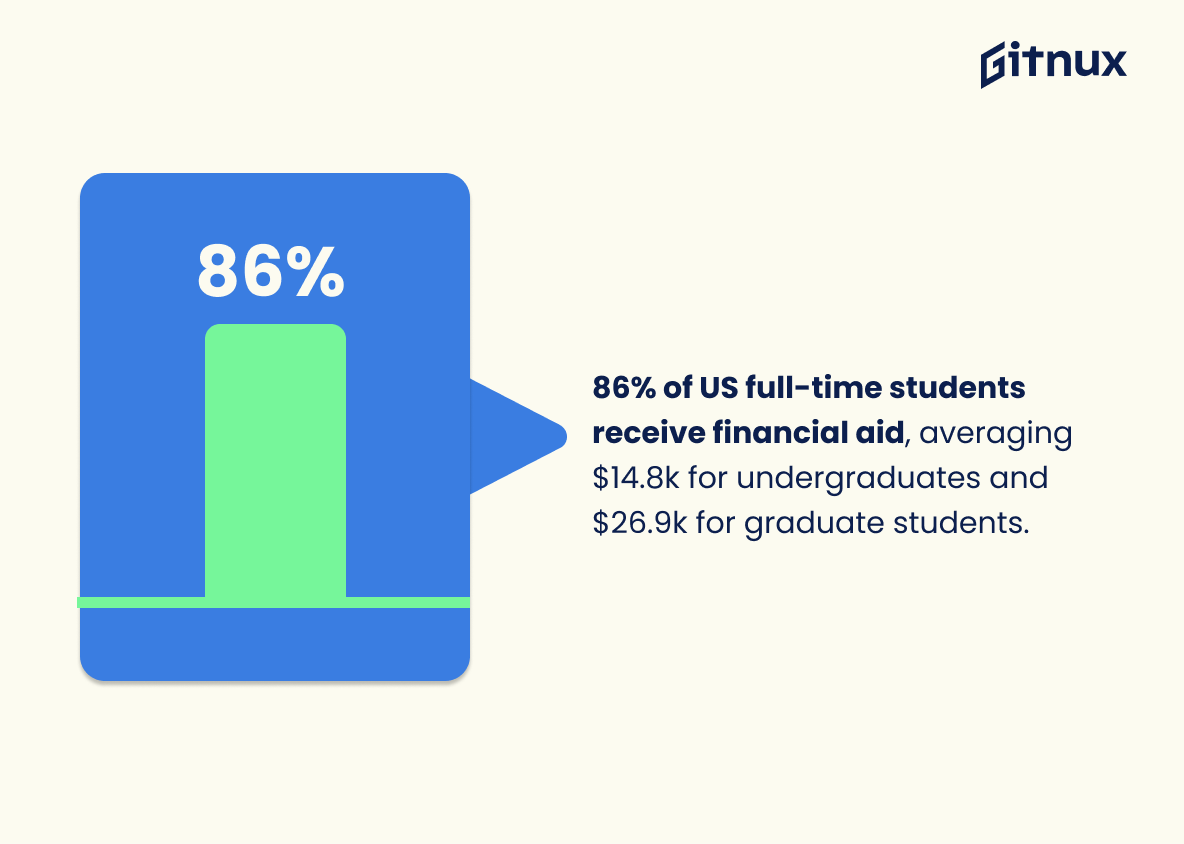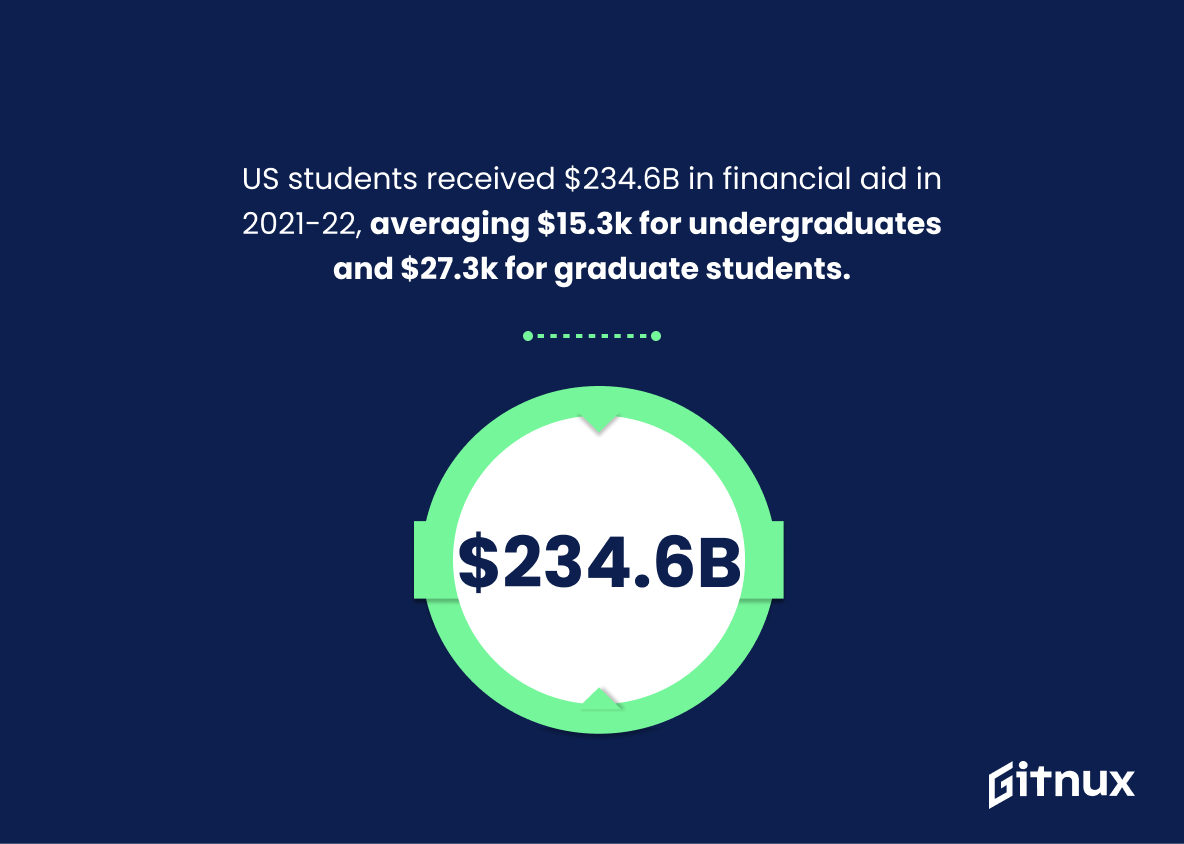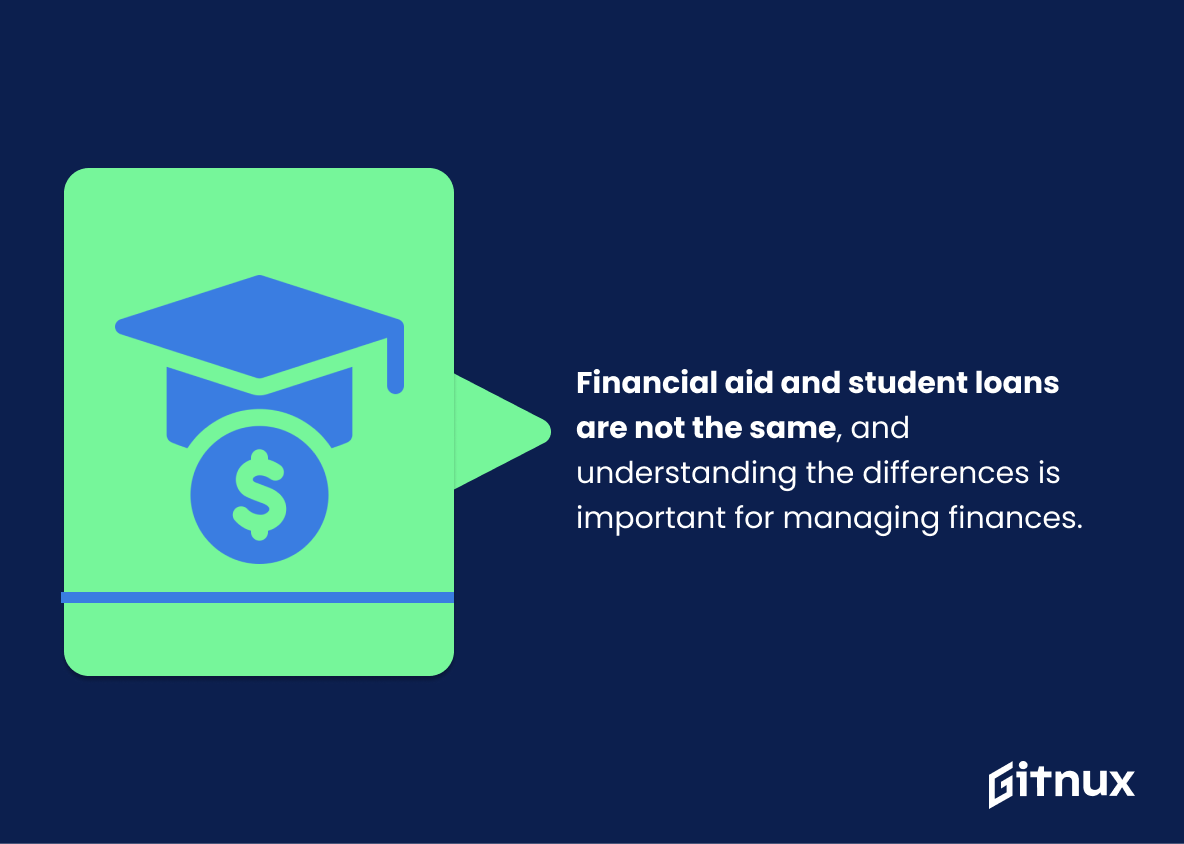Are you curious about the financial aid landscape in the United States? Are you interested in learning more about the statistics and trends related to financial aid? If so, then this blog post is for you. In this post, we will explore the latest financial aid statistics and trends, and discuss what they mean for students and families.
We will also look at the various types of financial aid available and how they can help students pay for college. Finally, we will discuss the importance of researching and understanding financial aid options before making any decisions.
Financial Aid: The Most Important Statistics
86% of full-time US students receive financial aid, with an average of $14,800 for undergraduates and $26,920 for graduate students, but 30% of parents have not saved any money for college and there are disparities in financial aid spending across states.
Undergraduate and graduate students in the US received a total of $234.6 billion in financial aid in 2021-22, with an average of $15,330 per undergraduate student and $27,300 per graduate student, with grant aid increasing from states and institutions while federal grant aid declining as a share of the total grant aid.
Financial Aid: Statistics Overview
During the 2021-22 academic year, $234.6 billion in financial aid was provided to undergraduate and graduate students, with over 85% of students receiving some form of aid.
This demonstrates the prevalence of financial aid and the availability of resources for students of all backgrounds to pursue higher education.
The FAFSA form is an important tool for students to access these resources, and the statistic highlights the amount of aid available and the number of students who are able to benefit from it.
83.8% of college students receive some form of financial aid, but public programs are underutilized.
This highlights the importance of utilizing public financial aid programs, which can be a great resource for college students in need of financial assistance.
It also shows the increasing need for financial aid over time, as the percentage of students receiving financial aid has increased by 18.8% over the past 20 years. This statistic is important for understanding the current state of financial aid and how it can be improved.
The majority of undergraduate students in the US rely on financial aid to afford college education, with Black undergraduate students, women, and dependent students being more likely to receive it.
It is important to understand the demographics of students who receive financial aid and the various types of financial aid available to them in order to ensure that everyone has equal access to college education.
86% of full-time US students receive financial aid, with an average of $14,800 for undergraduates and $26,920 for graduate students, but 30% of parents have not saved any money for college and there are disparities in financial aid spending across states.
This highlights the need for financial aid in the US, as well as the disparities in financial aid spending between states.
It also shows the diversity of financial aid recipients, with higher percentages for Black, Hispanic, and American Indian/Alaskan Native students. This is important to understand in order to ensure that all students have access to the financial aid they need to pursue higher education.
Undergraduate and graduate students in the US received a total of $234.6 billion in financial aid in 2021-22, with an average of $15,330 per undergraduate student and $27,300 per graduate student, with grant aid increasing from states and institutions while federal grant aid declining as a share of the total grant aid.
While federal grant aid is declining, states and institutions are increasing their grant aid, which is important for students who are seeking financial aid to help pay for their education.
This data also provides insight into the average amount of financial aid students are receiving, which can help inform decisions about how much aid to apply for and how to budget accordingly.
The article discusses the fluctuation of college affordability over the years and provides tips on how to make college more affordable through applying for aid, scholarships, loans, and creating a budget.
This provides an overview of the current state of college affordability and provides students and parents with strategies to make college more affordable.
Financial Aid can help reduce college costs and provide access to higher education, but eligibility requirements, limited availability, and repayment plans with interest rates should be considered.
Financial Aid Statistics are important because they provide a comprehensive overview of the advantages and disadvantages of financial aid for students pursuing higher education. This information is essential for students to make informed decisions about their finances and to understand the potential risks and rewards associated with financial aid.
Knowing the pros and cons of financial aid can help students make the best decisions for their future and ensure that they are able to access the resources they need to pursue their educational goals.
Federal student loans have fixed interest rates and are available to students without a credit check, but have limited eligibility for subsidized loans and require careful management of debt.
This highlights the importance of understanding the pros and cons of taking out a student loan before making a decision. It also emphasizes the need for careful management of debt, as it can be easy to accumulate debt if not managed properly.
Financial aid and student loans are not the same, and understanding the differences is important for managing finances.
This is important to understand the differences between financial aid and student loans, and the different types of financial aid available, in order to make informed decisions about how to manage finances.
Conclusion
In conclusion, financial aid is an important tool for students to access higher education. With the right information and resources, students can make informed decisions about their education and how to finance it.
The statistics discussed in this blog post demonstrate the importance of financial aid and the need for students to be aware of the various forms of aid available to them. With the right resources and support, students can make the most of their education and achieve their goals.
References
1 – https://www.bankrate.com/loans/student-loans/fafsa-statistics/
2 – https://educationdata.org/financial-aid-statistics
3 – https://www.bestcolleges.com/research/facts-financial-aid/
4 – https://www.thinkimpact.com/financial-aid-statistics/
5 – https://research.collegeboard.org/trends/student-aid/highlights
6 – https://www.collegeraptor.com/paying-for-college/articles/questions-answers/trends-in-college-pricing-and-student-aid/
7 – https://www.ablison.com/pros-and-cons-of-financial-aid/
8 – https://www.startwithfafsa.org/2017/11/federal-student-loans-pros-and-cons/
9 – https://moneytips.com/financial-aid-vs-student-loans/
